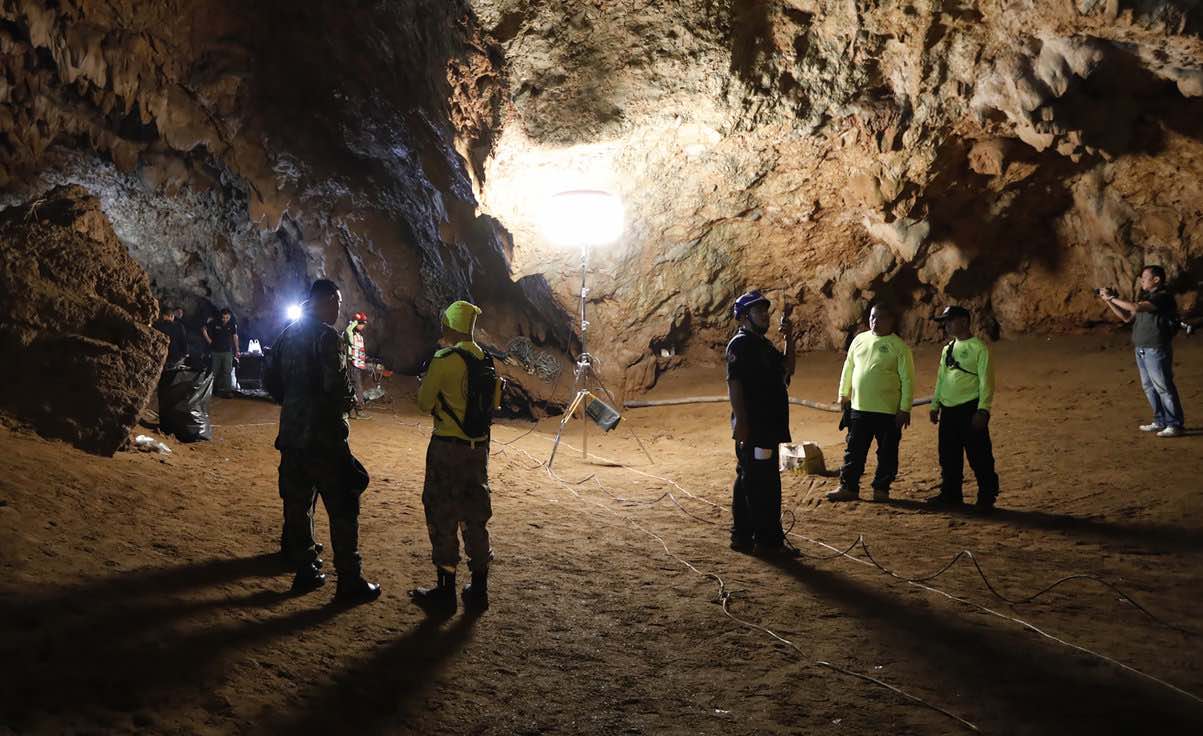
CAIRO – Egyptian archaeologists have discovered the remains of a pyramid dating back to the era of the 13th Dynasty (1795-1650 BC), during an excavation mission in the Dahshur royal necropolis, located around 40 kilometers (25 miles) south of the capital city of Cairo.
The groundbreaking development was announced by the head of the Ancient Egyptian Antiquities Sector, Mahmoud Afifi, in a statement on Monday, reports Aljazeera.
Due to the bent slope of its sides, the remains are believed to be one of ancient Egypt’s first attempts at building a smooth-sided pyramid. The structure was discovered just north of Pharoah Sneferu’s bent pyramid in the Dahshur royal necropolis. The royal necropolis is located on the West bank of the Nile River and was the burial site for courtiers and high-ranking officials.
Adel Okasha, the head of Dahshur necropolis says the remains of the new pyramid are likely to be the inner structure of the pyramid, which includes a corridor. Archaeologists have also found blocks that show the interior design of the pyramid, reports News Patrolling.
Dahshur Royal Necropolis
Besides being the burial grounds for courtiers and high-ranking officials, Dahshur is where ancient Egyptians transitioned from building step-sided to smooth-sided pyramids. Two of the Dahshur Pyramids, The Bent Pyramid, and the Red Pyramid, were constructed during the reign of Pharaoh Sneferu (2613-2589 BC).
The Bent Pyramid seems to have been one of the very first attempts at building a smooth-sided structure. But it had two major design flaws, Desert gravel and clay were used as a base, and this base eventually subsided due to the great weight of the blocks on top.
Secondly, it appears the blocks were engineered so that they were cut in such a way that the weight of them angled down, causing all the weight of the pyramid to push toward the center. This caused the pyramid to develop a “bent” appearance due to the change in the angles about halfway up its sides. The pyramid starts at a slope of 52 degrees, and at the bend, retains a slope of 43 degrees to the apex.
The pharaoh was not pleased on seeing this and promptly had another pyramid constructed, and it’s called the Red Pyramid. It gets its name from the lovely red hue it gives off after a nice rain, so they say. The Red Pyramid is ancient Egypt’s first true, smooth-sided pyramid, with a slope of 43 degrees, standing over 30-stories tall. Pharaoh Sneferu is believed to be buried in the pyramid.
How about a bit of history trivia. Pharaoh Sneferu’s son, Khufu, outdid his father by building the Great Pyramid of Giza, which stands 490 feet tall. But he never would have constructed the Great Pyramid without the knowledge learned from his father.













